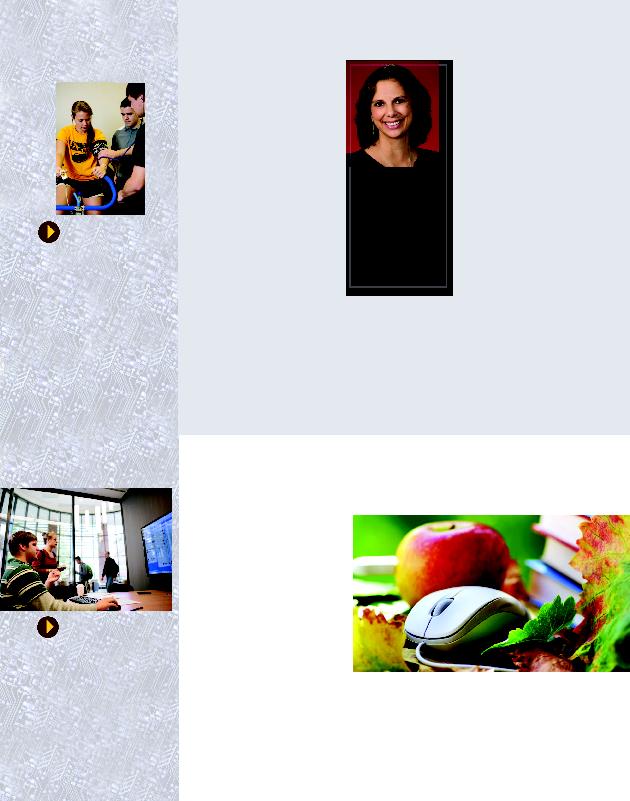
-- across the nation, the future of ed-
ucation requires a cohort of talented
and prepared young teachers to main-
tain those standards. St. Bonaven-
ture's education majors, armed with
electronic portfolios (eFolios for short),
not only meet those standards, but
can prove they meet them.
Dr. Nancy Casey, an associate profes-
sor of education and chair of the Ele-
mentary Education and Childhood Studies
departments. "We have very robust require-
ments right from the start."
has set even higher standards, requiring 1,000
hours before graduation. Plus, during their junior
years, education majors must delve into the
worldwide web to create a portfolio.
TIDBITS
Doherty from Syracuse, N.Y., found
the flipped classroom approach to
teaching to be very effective.
Due before each class, for home-
Branch's YouTube page and watch a
10-minute-or-less lecture video on
the topics we would be covering in
class. In these videos, Laurie would
not only discuss the topic and give
easy to understand examples, she
would also hold up sheets of paper
with notes and diagrams for us to
copy down in our notes. When we
would show up to class, we would
take a quiz based on the video using
our notes. This was extremely helpful
because it encouraged me to take
better notes. I loved that the videos were avail-
able whenever we needed them. I definitely took
advantage of that by rewatching lectures before
exams. It helped tremendously.
By having the lectures online, class time was
would take the lecture quiz, go over it and ask
any questions we had about the lecture, and
complete an exercise that
brought the material from the
lecture to life. By doing these
activities, it allowed us to not
just know the terms/concepts of
the business world, but how
they actually work and are
used.
After every class, we would fill
to comment on the video. This
enabled Laurie to see how she
could change or adjust the class
to best fit our learning styles. To
have a teacher that interested in
our learning preferences was
amazing. It makes the learning
experience and process a team
effort between the student and
just what the student wants. It is all about work-
ing together.
taking skills, study skills, and have helped me re-
tain more information. I did not just spend nights
trying to memorize vocabulary words or topics
that would be on the exams. I was able to learn
what the topics were and how they worked.
Adjunct business pro-
fessor Dr. Laurie
Branch (above) and
her teaching assistant
John Mattia describe
their approach to the
flipped classroom:
tinyurl.com/pokd2g6